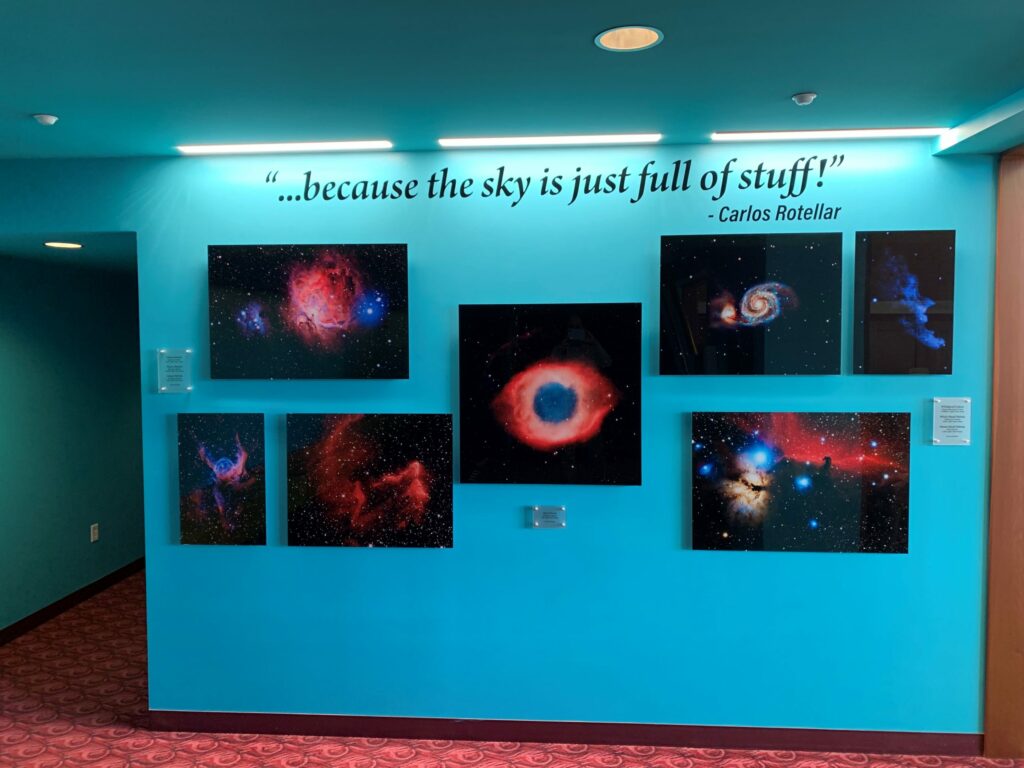Merriam Webster defines astrophotography as photography or imaging of astronomical objects, celestial events, or areas of the night sky. Learn about our newest art exhibit on display next to the donor lounge on the second floor of astrophotography by Elm Street Society member Dr. Carlos Rotellar and his passion for the art form.
I started my journey with astrophotography about three years ago and, I knew nothing about the sky nor how to take pictures of it. During this time, I learned the beauty of the night sky and how to photograph it from my driveway. When we look at the night sky, we see a dark space with white points of light, but in reality, there is much more than meets the eye. With a camera mounted on a telescope and a lot of patience, we can discover that the sky is just full of stuff! These photos are a window into the past from hundreds of years to millions of years.
It is like hunting through the night sky. I choose an object in the sky, I find it, and then I capture it! It requires learning the sky, learning the equipment, and learning how to take the pictures and process them. Each session takes several hours of obtaining long exposure images; sometimes it takes several nights.
To put it in perspective, the speed of light is 186,000 miles per second therefore, in one second, light goes around the earth about seven times. When I photograph the Andromeda galaxy, which is 2.5 million years away, I am taking a picture that is 2.5 million years old. If I wanted to visit this galaxy, it would take me 2.5 million years to get there, traveling at the speed of light. The observable universe is more than 90 billion light-years in diameter and continues to expand.
Learn more about the photos that are on display below:
Learn more about the photos that are on display below:
The Andromeda Galaxy, with more than a trillion stars, is 2.5 million light-years away and 220,000 light-years across. It is the nearest major galaxy and is on a collision course with the Milky Way. In about 4.5 billion years, these galaxies will merge to form a giant galaxy nicknamed, Milkdromeda. However, before this happens, our sun will have died creating a planetary nebula and the earth will be no more.
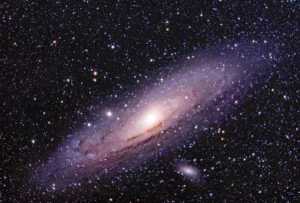 (Andromeda Galaxy)
(Andromeda Galaxy)
Horsehead Nebula is located at a distance of 1,300 light-years and it is a dark nebula. The dark silhouette of the horsehead is the result of a dense cloud of dust that blocks the light that is behind it. The red intense color is ionized hydrogen gas caused by a nearby star. To the left is the Flame Nebula, which is an emission nebula where star formation occurs. The blue big star above it is Alnitak which is the most eastern star of the Orion Belt.
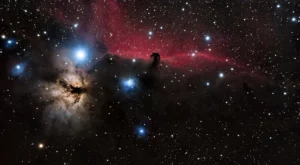 (Horsehead Nebula)
(Horsehead Nebula)
Thor’s Helmet Nebula is an emission nebula located 12,000 light-years away. The center star (WR 7) is about 280,000 times brighter than the sun and 16 times more massive. It will end its life in a major supernova explosion.
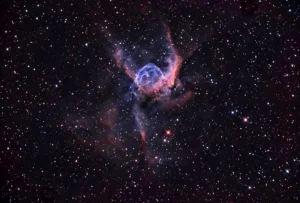 (Thor’s Helmet Nebula)
(Thor’s Helmet Nebula)
The Whirlpool Galaxy is located 23 million light-years away and is 60,000 light-years in size. These two interacting galaxies are connected to each other by a tidal bridge of dust which triggers star formation.
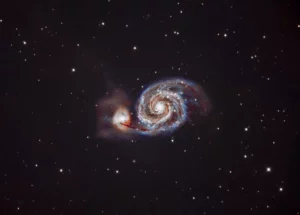 (Whirlpool Galaxy)
(Whirlpool Galaxy)
The Helix Nebula, also called the Eye of God, is a planetary nebula located 700 light-years away and about 2.8 light-years in size. It was created by the death of a star similar to our sun. When the star ran out of hydrogen to burn, it evolved into a red giant and expelled its outer layers. The center core will become a white dwarf when it cools down. Our sun will end its life in the same manner in 4.5 billion years. The human race needs to find another solar system before time is up.
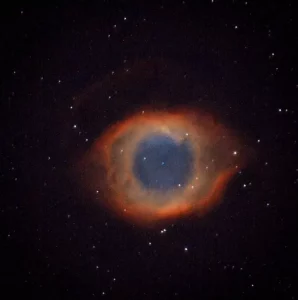 (Helix Nebula)
(Helix Nebula)
The Ghost Nebula at Cassiopeia is an emission and reflection nebula located 550 light-years away.
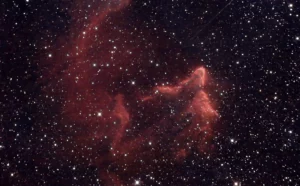 (Ghost Nebula)
(Ghost Nebula)
The Witch Head Nebula is a reflection nebula located 1,000 light-years away. The dust and gas of this nebula reflect the light of the star Rigel in the constellation of Orion. There is no star formation in reflection nebulae
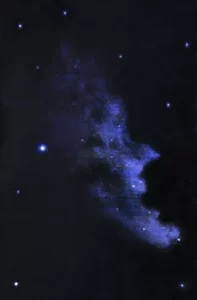 . (Witch Head Nebula)
. (Witch Head Nebula)
The Orion Nebula is an emission nebula located 1,300 light-years away. The center contains a group of young stars which form the Trapezoid Cluster where young stars are formed. To the left is the Running Man, which is both an emission and a reflection nebula. It looks like a little ghost sprinting through space.
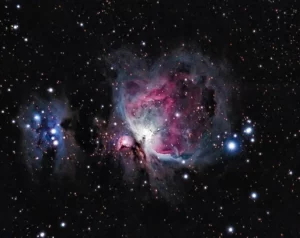 (Orion Nebula)
(Orion Nebula)

